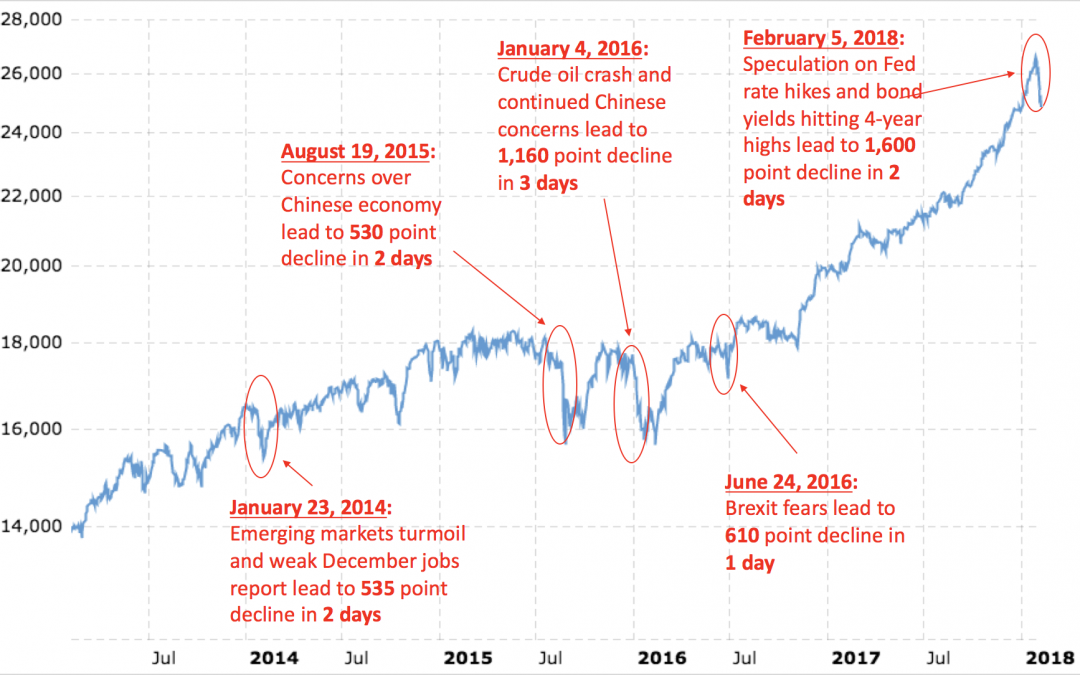WASHINGTON—The Dow Jones Industrial Average suffered its largest single-day points decline in trading Monday, but the decline paled in comparison to past selloffs in terms of percent — and the market was able to rebound in trading Tuesday.

The Dow closed up 567 points Tuesday, reversing almost half of Monday’s 1,175-point drop. That drop was nearly 400 points larger than the next biggest selloff—which came in the wake of the 2008 financial crisis.
But as a percentage of the overall stock index, the decline was just 4.6 percent Monday. That’s because the index this year reached its highest point, having delivered average annual returns of 12 percent since 2008 driven by higher corporate earnings and inflation. The recent decline came as investors expressed fear that the Federal Reserve could raise interest rates faster than previously expected and bond yields hit four-year highs.
The largest percentage decline suffered by the Dow came during Black Monday in 1987, when the market plummeted 23 percent in a single day of trading as slowing economic growth coupled with rising inflation caused investors worldwide to panic. An equivalent 23 percent decline today would have meant a whopping 5,870 point decline off Friday’s close.

Even compared to the other largest points declines in the Dow, the percent decline of Monday’s selloff was relatively low. The second-largest points decline came Sept. 29, 2008, and that 778-point decrease represented a 7 percent decline. The third-largest drop came just two weeks later on Oct. 15, with the 733-point drop representing an 8 percent decline.
A plurality of Fed officials have expressed their desire to hike rates three times in 2018, but indications of additional rate hikes could cause the market to decline further.

